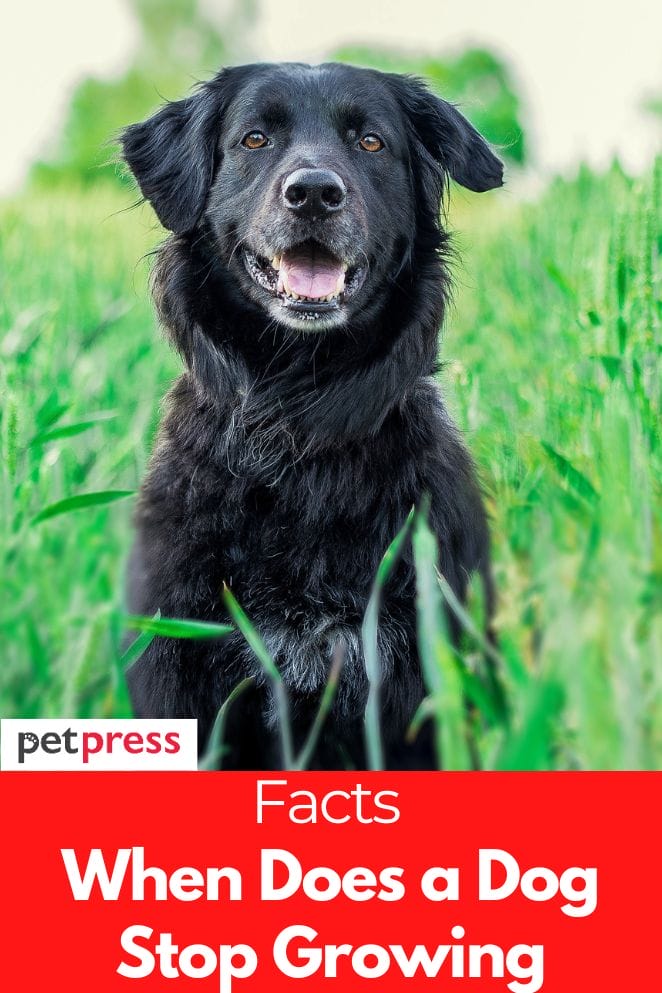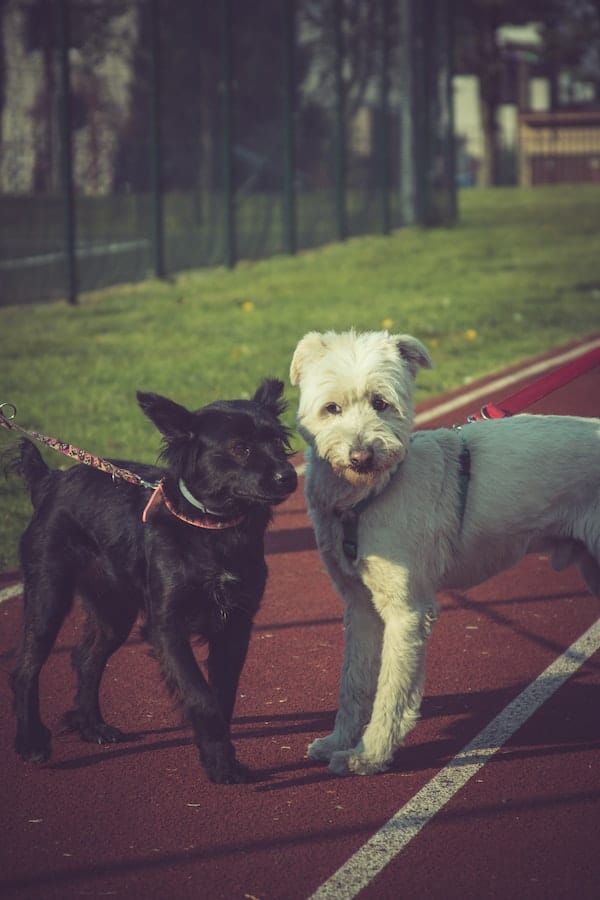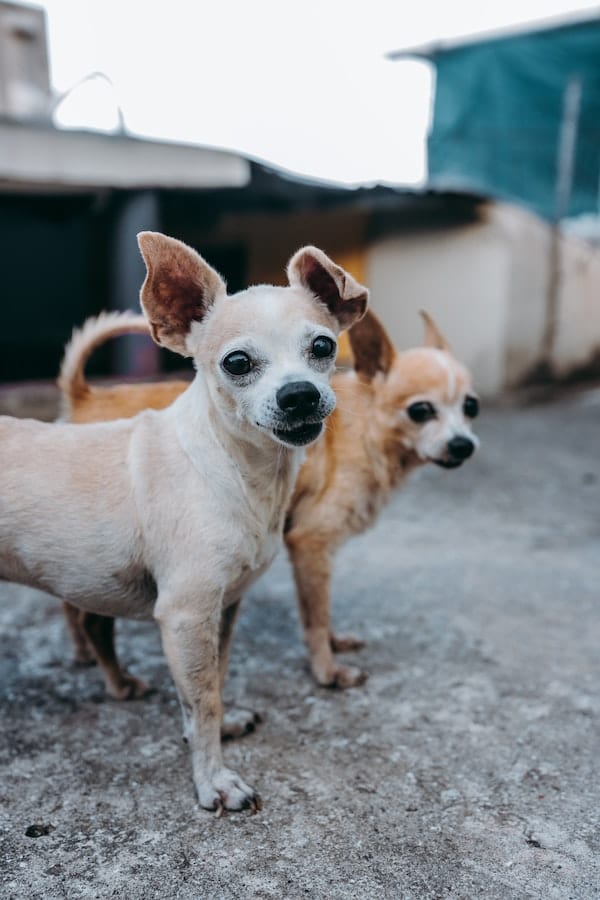
Dogs are not like people when it comes to growing. They usually stop growing at around one-year-old, while humans continue to grow until they reach about 18 years of age.
This is due in part to the difference in the rate of muscle and bone growth between dogs and people.
Dogs have more muscle mass and bones that don’t grow as long as human bones, so they reach their adult size sooner.
Another reason that dogs stop growing earlier than humans is that they mature sexually at a younger age.
At what age is a dog fully grown?
A dog’s age at full growth can vary depending on a number of factors, including its breed and size. Generally speaking, smaller breeds tend to reach maturity earlier than larger breeds.
In most cases, a dog will fully mature and stop growing around one year of age.
However, this can vary depending on a number of factors, such as nutrition, overall health, and genetics.
Overall, though, most dogs reach their full physical size and development by the time they are one year old.
What are the factors that determine your dog’s stop growing?

Some of the main factors that can affect your dog’s stop growing include nutrition, genetics, and overall health.
Nutrition
Nutrition is one of the most important factors that determine when a dog stops growing.
A dog’s diet needs to provide all the nutrients needed for healthy growth and development, including protein, fat, vitamins, and minerals.
Without proper nutrition, a dog may not reach its full size or maturity and may experience health problems related to poor growth.
Factors that can influence a dog’s nutritional needs include its breed, size, age, and activity level.
Genetics
In addition to nutrition, genetics also play a role in determining when a dog stops growing.
This can include things like inherited traits, such as body size and shape, as well as gene mutations that affect growth and development.
Overall Health
Finally, a dog’s overall health is important when it comes to its stop growing.
Conditions like hypothyroidism, hormonal imbalances, and certain genetic disorders can all impact growth and development.
Maintaining good overall health through proper nutrition, regular exercise, and veterinary care can help ensure that your dog reaches its full size and maturity at the appropriate time.
When do different-sized breeds finish growing?

There is no definitive answer to this question, as the rate of growth and development can vary significantly between different breeds.
Factors that may influence when a dog stops growing include its size, age, genetics, and overall health status.
Smaller breeds
Smaller breeds tend to reach maturity earlier than larger breeds, typically around one year of age.
This is due in part to genetic and environmental factors, as well as differences in their rate of growth and development.
Smaller dogs tend to have faster metabolisms and higher energy needs, which can contribute to an accelerated rate of growth.
Additionally, smaller dogs may mature sexually at a younger age, which also affects their overall physical development.
Medium breeds
Medium breeds tend to take longer to mature than smaller dogs, reaching full growth and development around two years of age.
This is due in part to their larger size and more complex metabolic needs, which require more time and resources for growth.
Additionally, factors like nutrition and genetics may play a role in medium breed maturity, though this can vary depending on the individual dog.
Large breeds
As a general rule, large breeds tend to take the longest to reach maturity, often not reaching full growth until they are three years old or older.
This is due in part to their larger size and higher energy needs, as well as slower genetic development and increased susceptibility to health problems.
However, factors like nutrition, exercise, and overall health status can also play a role in the maturation of large breeds.
What can you do to help your dog grow?

There are a number of things that you can do to help your dog grow and develop at the appropriate rate. These include:
Providing a healthy, nutrient-rich diet
One of the most important things that you can do to support healthy growth and development in your dog is to provide a nutrient-rich diet.
This should include plenty of high-quality protein, healthy fats, and essential vitamins and minerals.
A well-balanced diet will help ensure that your dog has the energy and nutrients needed for proper growth and development, supporting healthy physical and behavioral development at every stage.
Ensuring that your dog gets plenty of regular exercises
Another key component of healthy growth in dogs is regular exercise. This can include things like walking, playing outdoors, and engaging in training or play activities.
Exercising your dog on a regular basis supports healthy muscle and bone development, as well as mental stimulation and emotional well-being.
Plus, it’s a great way to bond with your dog and strengthen the human-animal bond.
Maintaining good overall health
In addition to providing a healthy diet and regular exercise, it is important to maintain good overall health in your dog.
This includes ensuring that they get routine veterinary care, including annual checkups and vaccinations, as well as prompt treatment for any health issues or concerns.
Additionally, you can help promote good health by avoiding exposure to environmental toxins and other risks and providing stress-relief activities like massage, grooming, or petting.
By taking these proactive steps, you can support your dog’s growth and development at every stage.
Final words
Overall, there are many factors that can influence the rate of growth and development in dogs.
Smaller breeds tend to mature more quickly than larger breeds, while medium-sized dogs fall somewhere in the middle.
Factors like nutrition, exercise, and overall health status can also play a role in the maturation process, so it is important to take steps to support healthy growth and development in your dog.
Some of the things that you can do to help your pet reach its full potential include providing a nutritious diet, ensuring regular exercise, and maintaining good overall health.
With these simple steps, you can give your dog the best possible chance for long-term physical and behavioral success.


GIPHY App Key not set. Please check settings